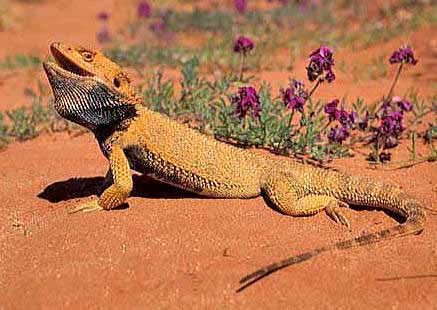All You Need to Know About the Common Bearded Dragon: A Beginner's Guide
Introduction
Are you a beginner hoping to own a pet common bearded dragon? You’ve come to the right place! Bearded dragons, also known as ‘beardies’, make great pets because of their adorable personalities and easy-to-maintain requirements. This blog post will provide you with all the necessary information about the common bearded dragon, including their physical characteristics, habitat, diet, and more.
Description and Physical Characteristics
The common bearded dragon, scientifically known as Pogona vitticeps, is native to the arid regions of Australia. They are a type of lizard that come in various colors, such as tan, brown, yellow, and orange. Adult bearded dragons typically grow to be around 18-24 inches in length, with the males being slightly larger than the females.
As their name suggests, bearded dragons have a unique feature called their ‘beard’, which is a flap of skin under their chin that becomes black when they feel threatened or scared. It’s important to note that this is a natural defense mechanism and not a sign of aggression. Additionally, bearded dragons have rows of spiky scales along their back and a long tail that makes up most of their body length.
Habitat and Environment
When it comes to their habitat, bearded dragons need a warm and dry environment that mimics their natural desert habitat. You can achieve this by providing them with a terrarium or enclosure that has a heat lamp, a basking area, and a cooler area. It’s also important to include plenty of hiding spots, such as rocks or logs, for them to feel secure. In addition, you’ll need to keep the humidity low and provide them with a substrate, such as reptile carpet or paper towels, that is easy to clean and doesn’t pose any choking hazards.
![]()
Bearded dragons are diurnal animals, meaning they are most active during the day and sleep at night. Therefore, it’s important to provide them with a consistent light and dark cycle to ensure they get the proper amount of rest.
Diet and Feeding
In their natural habitat, bearded dragons are omnivores and eat a variety of insects, fruits, and vegetables. As a pet owner, it’s important to provide them with a balanced diet that consists of both insects and plant matter. A few examples of appropriate insects include crickets, mealworms, and Dubia roaches. Meanwhile, some great vegetables and fruits for bearded dragons include collard greens, sweet potatoes, and apples.

It’s important to note that bearded dragons are prone to obesity, so it’s crucial to monitor their intake and ensure they’re getting the right amount of nutrients. Additionally, make sure to always provide them with fresh, clean water in a shallow dish that’s easy for them to access.
Behavior and Temperament
Bearded dragons are known for their friendly and docile personalities, making them great pets for beginners. They are social animals and enjoy interacting with their owners, but they can also be content spending time alone. Additionally, bearded dragons are intelligent creatures and can even be taught simple tricks, like waving or eating from your hand. It’s important to handle them gently and not to grab them by their tail, as this can cause them to feel threatened and become aggressive.

Bearded dragons also have the ability to regulate their own body temperature, which is a unique feature amongst reptiles. They’ll often bask under their heat lamp to warm up and move to a cooler area to cool down. Therefore, it’s important to provide them with a variety of temperature zones within their enclosure.
Health and Care
Bearded dragons are generally healthy pets, but they can be prone to ailments such as respiratory infections or metabolic bone disease if not properly cared for. It’s important to keep their enclosure clean and provide them with a healthy diet and plenty of exercise. Additionally, it’s recommended to have your bearded dragon examined by a veterinarian once a year to ensure they’re in good health.

As for their care, bearded dragons require routine cleaning of their enclosure and substrate, as well as daily feeding and watering. You should also provide them with a source of UVB lighting to help them absorb calcium and prevent metabolic bone disease. Lastly, make sure to handle them gently and provide them with plenty of opportunities to exercise and explore their environment.
Conclusion
In summary, the common bearded dragon is an excellent pet choice for beginners due to their friendly personalities and relative ease of care. By providing them with a proper habitat and diet, as well as routine health check-ups, you can ensure that your bearded dragon will live a long and healthy life. We hope this beginner’s guide has been informative and helpful in your journey towards owning a pet bearded dragon!
